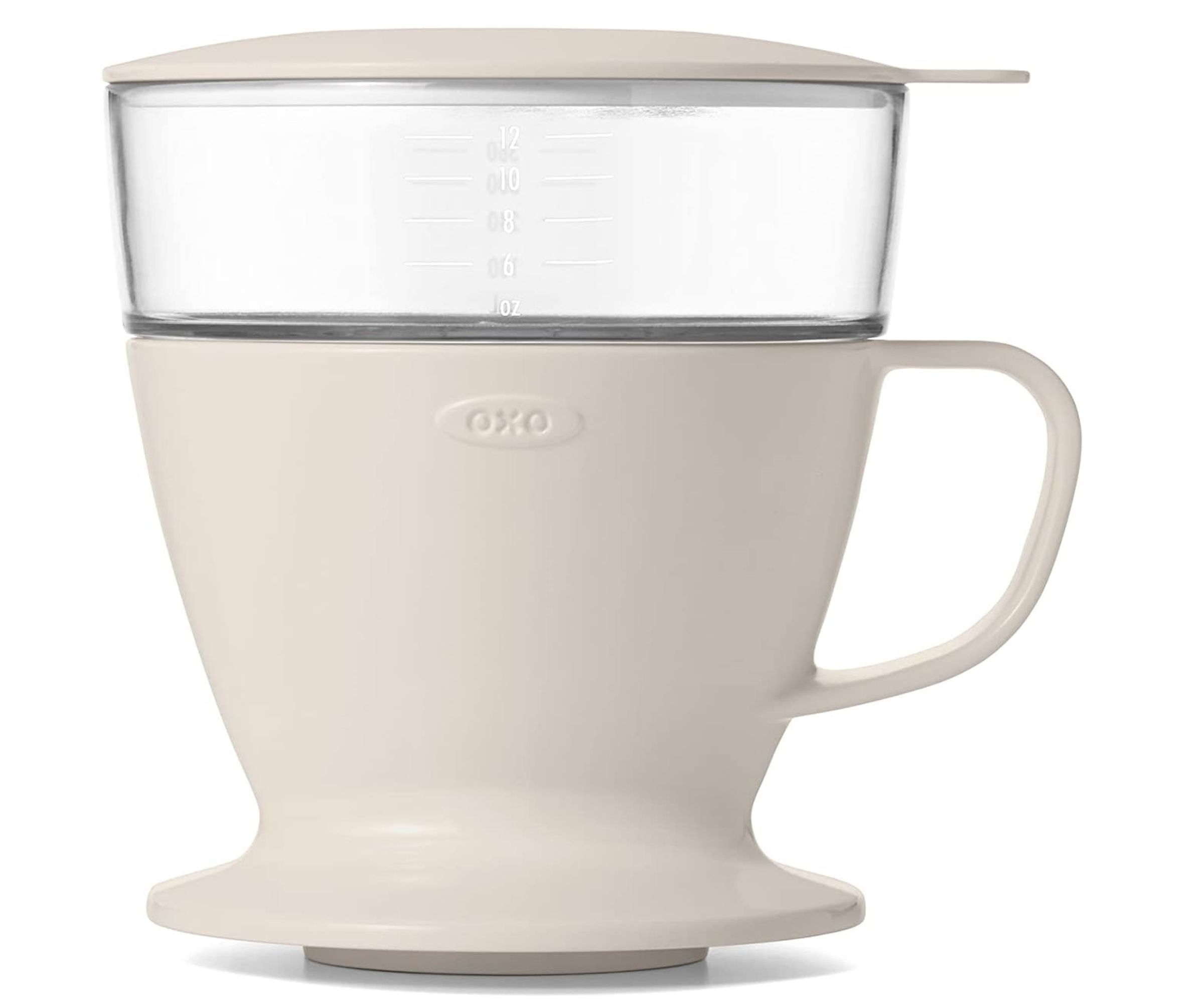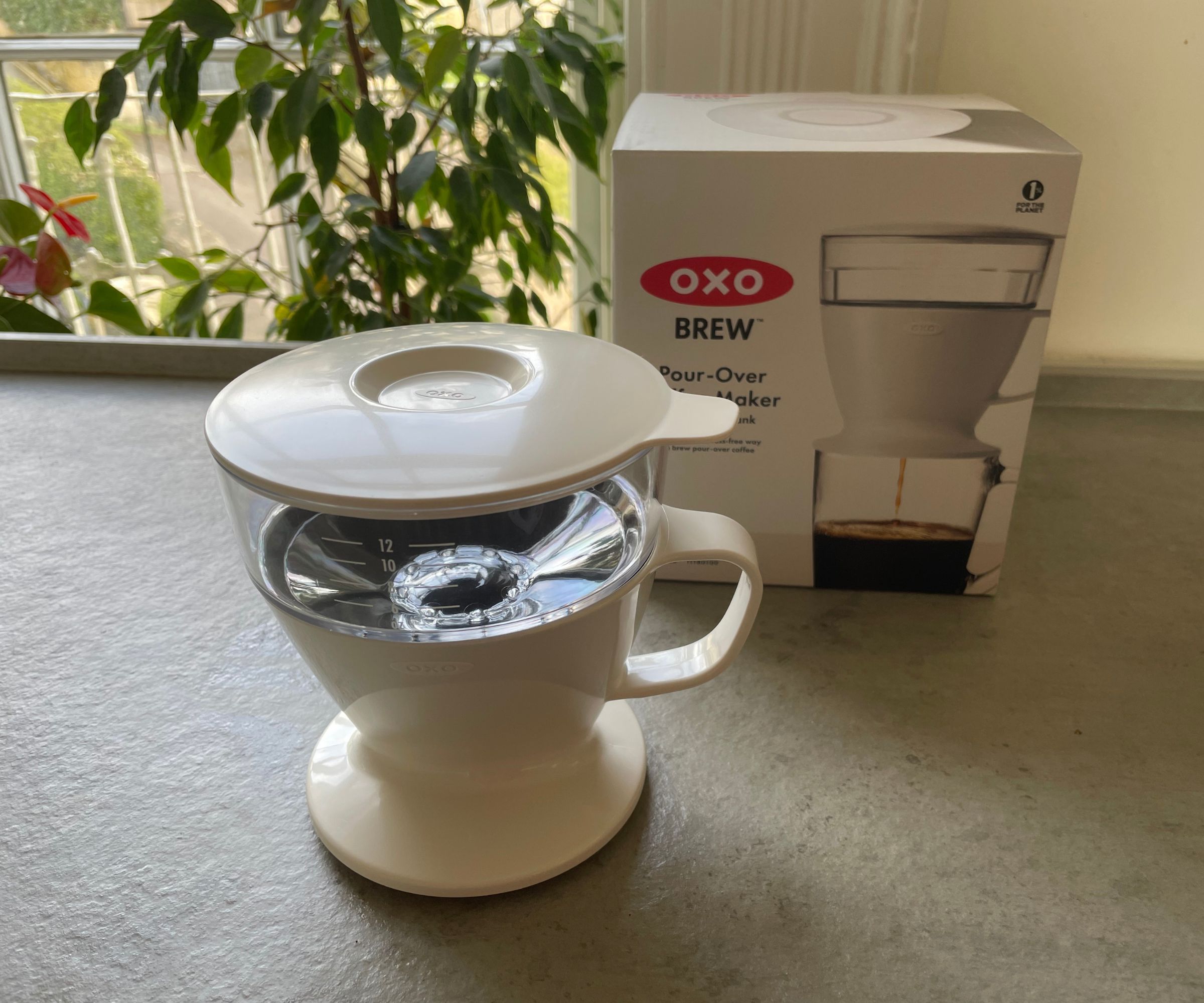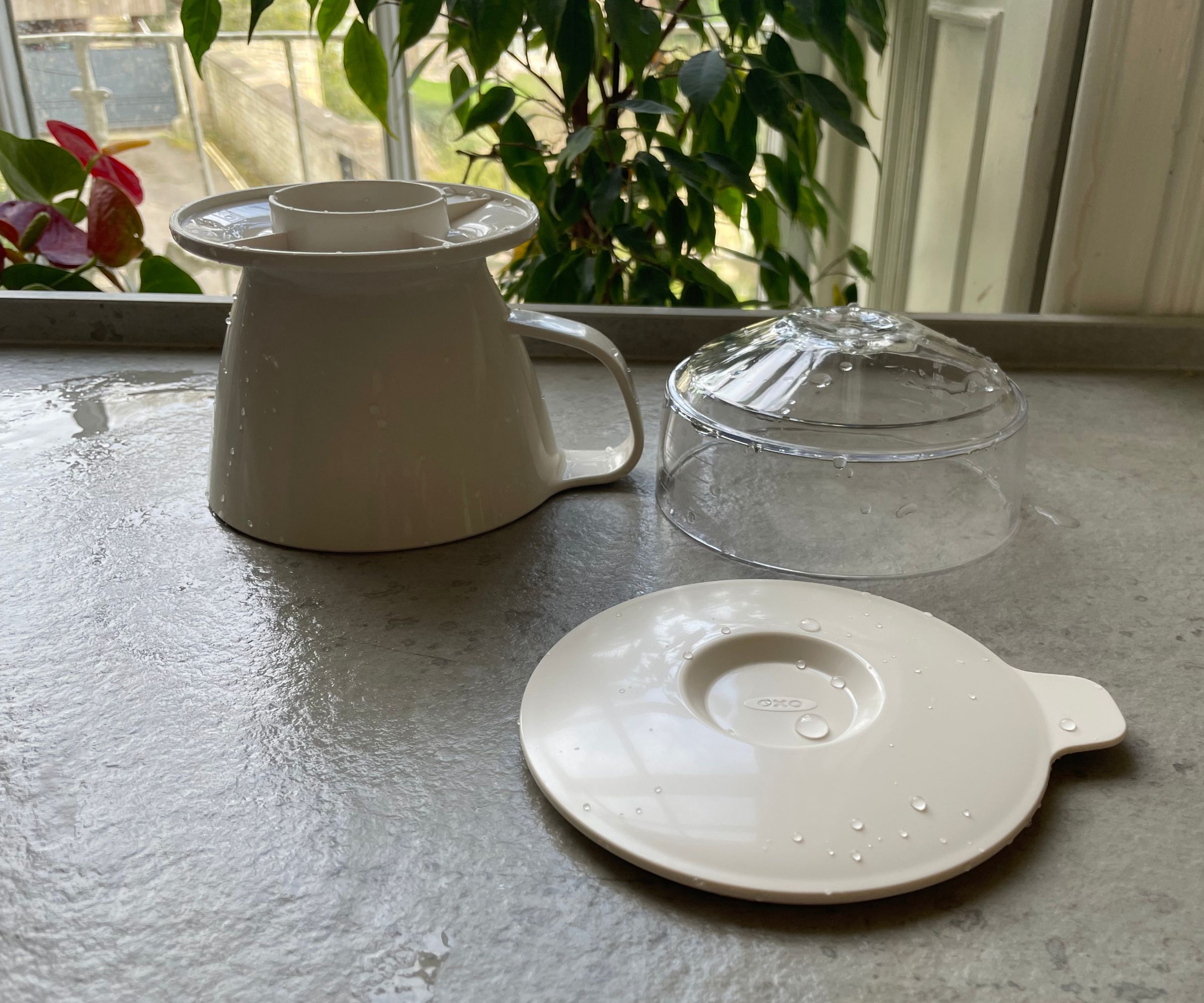Coffee novice? The OXO Brew Pour-Over was designed with beginners in mind
You won't make anything short of a perfect pour-over

The OXO guarantees incredible value for money. The clever design evenly saturates your coffee for an even flavor, so even beginners can make a delicious cup of coffee. It doesn't feel as premium as other models, but it's perfect for first-time pour-over drinkers.
-
+
Easy to use
-
+
Makes delicious coffee
-
+
Capacity for two
-
+
Dishwasher safe
-
+
Lightweight
-
-
Large footprint
-
-
Feels a little cheap
You can trust Homes & Gardens.

The pour-over market is dominated by big brand names. OXO is on its way to establishing itself amongst the best. Their inexpensive pour-over is a simple model that delivers consistently delicate flavors. There’s a lot to love, especially the price tag.
More than any other brewing style, people are curious about pour-overs. The best pour-overs deliver specialty coffee flavors, for a fraction of the price of other coffee makers. So, what's the ideal price point for a good pour-over? I think OXO has the answers.
OXO's Brew coffee maker line is often cited as the cheaper option when compared to Fellow, Hario, and Melitta. I wanted to find out whether it could brew quality coffee in spite of its small price tag. Eleven cups later, here are my thoughts.
Specifications

| Dimensions | 5.25 x 5.25 x 5.25 inches |
| Capacity | 12 oz |
| Material | Tritan |
| Weight | 7.8 oz |
| Dishwasher safe | yes |
Unboxing

OXO takes a very no-nonsense approach to its packaging. The compact cardboard box is completely recyclable. The pour-over came wrapped in some soft plastic, but that can be recycled (with a little more effort) and it kept the OXO scratch-free and shining.
When I pulled this out of its box and sat it on the countertop, I was surprised at how big it was. Pour-overs are normally small (about a cappuccino cup's size) and the OXO is at least double that. However, it comes with more parts than other pour-overs, such as the auto-drip tank.
The Tritan parts feel cheaper than the porcelain and ceramic models that I’ve tested in the past, especially since the auto-drip tank's walls and lids feel thin and quite flimsy. However, OXO reassures customers that the BPA-free tritan is durable, so I can’t complain. Plus the plastic body means that this is really light and much harder to drop and accidentally smash than lots of other pour-overs.
Who would it suit?

This is perfect for beginners. The low upfront cost is brilliant if you’re not sure whether pour-over is for you. The best part of the OXO is the innovative auto-drip tank. Rather than requiring you to invest in a precision-pour gooseneck kettle (such as this one from Fellow), OXO has designed a neat topper that controls how quickly your coffee saturates your coffee grounds. It takes all the guesswork and chances of messing up out of your hands – every beginner’s dream.
Design expertise in your inbox – from inspiring decorating ideas and beautiful celebrity homes to practical gardening advice and shopping round-ups.
If you’re looking for something that feels and looks ultra-premium, the OXO isn’t for you. It’s not made to be looked at, so you won’t be the centerpiece of your coffee station any time soon, but it’s not an eyesore either.
What is it like to use?

Brewing with the OXO was pretty dreamy. It’s straightforward and comes with unique features that aren’t complicated. OXO also includes paper filters, so you can start brewing as soon as your coffee maker arrives. Personally, I prefer to brew with a reusable filter like this one from Walmart; it’s less waste, less to forget, and offers a slightly richer flavor profile.
Before brewing, I gave the whole pour-over a rinse to clean off any factory dust and dirt. Then, after drying the OXO, I placed my filter paper inside the cone and ran some filtered water over it. Pre-suturing your filter paper ensures that the flavorful oils don’t get absorbed into the paper. This means you get more flavors in your cup and a more consistent brew.

Once I had done this, I put a scoop of finely ground coffee into the filter, placed the auto-drip tank on top, and poured filtered water at 185 degrees over my pour-over. There are measures along the side of the auto-drip tank, so you can judge by eye how much water to pour. However, as a bit of a geek, I measured out 2.5 oz of filter water (for 1.4 oz of ground coffee).
The OXO brewed in around two and a half minutes. It looked quite light, which made me concerned that the coffee would taste weak and watery. It was lighter in flavor than some pour-overs but the coffee still had balanced, distinct flavors. It was sweet and very drinkable. Rather modestly, I would say it was a success.
Cleaning, storage, and maintenance

The cleanup was easy. Filter paper can go in the food waste and the plastic is all dishwasher safe. I washed mine in warm, soapy water and all the coffee marks, grains, and stains just slid off. Coffee always tastes better when you know you haven’t got a huge cleaning session waiting for you when you’re finished, so the OXO scores top marks here.
Even though this is bigger than other coffee makers, it’s easy to store: everything stacks neatly inside each part and it’s light enough to put on even the top shelf.
How does it rate online?

Everybody sells the OXO pour-over as an excellent option for beginners. Expert reviewers and Amazon customers all loved just how simple this is to use. They love that it is no hassle, but still capable of delivering a delicious cup of coffee.
For the price, everyone was satisfied that they had got good value for money. Even though I thought this felt a little cheap, I was pleased to see that people had owned theirs for years, commending OXO on the durable design. Nobody suffered any cracking or staining, which is remarkable.
The only criticism I could find was on the drip rate. This is slower to brew than almost all other pour-overs on the market and some found that frustrating. I timed mine to take just over two and a half minutes, which is about average. However, I wonder if the pre-saturated filter paper made a difference for me. If timing is a deal-breaker for you, saturating your filter paper is my top tip.
How does it compare?

Before the OXO, the Bodum pour-over was my go-to recommendation for pour-over coffee novices. Both offer excellent value, a simple design, and some well-considered features.
The Bodum is better for larger servings, plus, the carafe is made from glass, which feels more premium than the OXO's plastic tritan. The downside is that the glass is easier to smash and not a great insulator, so doesn't suit clumsy coffee makers very well.
The OXO's auto-drip tank top gives more balanced flavors, especially if you're new to pour-over coffee. However, you will need to buy paper filters for the OXO. With the Bodum, the pour-over comes with a permanent filter already integrated into the design.
If you put flavors first, the OXO is better. If you need capacity and you're eco-conscious, the Bodum is better. You won't go wrong with either.
Should you buy it?

I love the OXO pour-over for coffee novices. The thoughtfully designed auto-drip tank means that it's impossible to make a bad brew. However, it is slightly slower than other pour-overs and not quite as beautiful or premium as a Chemex or Melitta. If you liked the look of the OXO, but want to evaluate your options, we have six others in our buying guide for the best pour-overs.
How we test

At Homes & Gardens, we are meticulous in how we test coffee makers. We have a team of experts who are always watching the coffee market, looking for innovative designs from big and small brands.
Once we've done our research on ones that we think you'll love, we call them into our test kitchen. Here, we'll use a pour-over to make single-servings and big batches of coffee (where possible). We use the same, Union beans, as well as filtered water at 185 degrees, keeping all controls as stable as possible.
We'll measure the time, temperature, and taste of the coffees that every pour-over makes. As well as recording how easy a coffee maker is to clean, how neatly it stores, and how good it looks.
With years of experience under our belts, we'll also discuss whether a coffee maker is good value and how it compares to other models on the market. Essentially, we'll let you know everything that we think you need to know before you jump into a purchase. That way, when one is sitting on your kitchen countertop, you can be satisfied that you made an informed decision.

Laura is our eCommerce editor. As a fully qualified barista, she's our expert in all things coffee and has tested over thirty of the best coffee makers on the market. She has also interviewed Q-Graders and world-leading experts in the coffee industry, so has an intimate knowledge of all things coffee. Before joining Homes & Gardens, she studied English at Oxford University. Whilst studying, she trained as a master perfumer and worked in the luxury fragrance industry for five years. Her collection of home fragrance is extensive and she's met and interviewed five of the world's finest perfumers (also known as 'noses'). As a result of this expansive fragrance knowledge, she always puts quality and style over quantity and fads. Laura looks for products which have been designed simply and with thoughtful finishes.